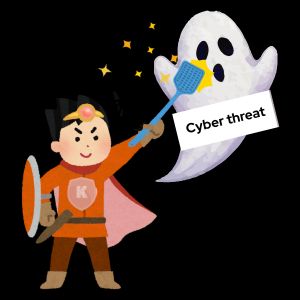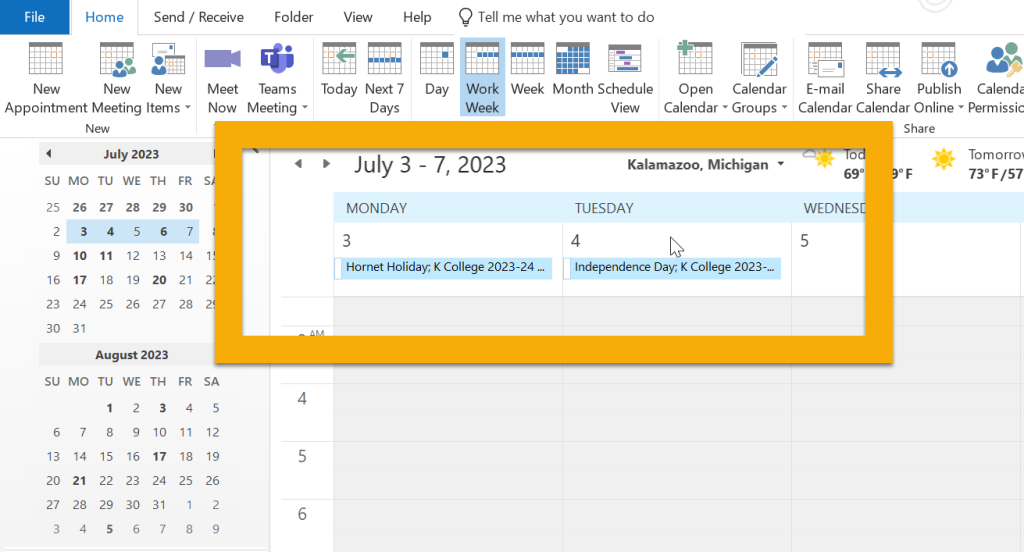
Be Prepared…
Get ready for those harmful hackers looking to get control of your accounts and add an extra layer of security by enabling multi-factor authentication.

Get ready for those harmful hackers looking to get control of your accounts and add an extra layer of security by enabling multi-factor authentication.

Don’t get tricked and instead treat the security of all of your accounts equally. No matter how unimportant you think your account may be, hackers find value in everything.
Did you miss the latest announcement? Subscribe to receive our posts directly to your inbox!
Let’s avoid cybersecurity nightmares and prepare for this spooky season and beyond.
October is Cybersecurity Awareness Month where Information Services will share some tips to keep the phishing phantoms, horrid hackers, and the malicious malware away.
Subscribe to get your tips this month!

Did you miss the latest IS announcement? Subscribe to receive our posts directly to your inbox!

Microsoft’s “Bookings with Me” (EDIT: also known as Personal Bookings) is now available as a tool for scheduling meetings, advising, and other one-on-one appointments. This is designed to integrate with your Outlook calendar and produce an easy-to-use website for people to book time on your calendar. If you’re previously familiar with Microsoft Bookings, Bookings with Me is a streamlined tool better designed for an individual user to set up quickly.
Get started with Microsoft Personal Bookings Frequently Asked Questions (FAQ)
Contact the Help Desk at 269.337.5800 or HelpDesk@kzoo.edu.

You can place Kalamazoo College holidays and “weeks of the quarters” (e.g. Fall Week 1) on your Outlook calendar? It’s true!
To do so follow the K College Calendar Holiday Entries instructions. Also note that this is an Outlook holiday file and is compatible with Outlook for Windows only.
Please contact the Help Desk for more information or additional help.
Did you miss the latest IS announcement? Subscribe to receive our posts directly to your inbox!

Happy New Year K Community!
To kick off 2023, here are some new and some not so new IS resources that will come in handy throughout the quarter.
As always, if you need to connect, please feel free to send us an email at HelpDesk@kzoo.edu or stop by the Help Desk in the Upjohn Library Commons (located on the first floor to the right of the grand staircase). We’re open Monday – Friday: 8:00 a.m. – 5:00 p.m. with Student Computer Consultants available during some off hours.
Looking for resources depending on whether you’re a student, faculty, or staff member? If so, select the page that relates to you:
Did you know there are resources for supervisor’s hiring new employees and onboarding tips for new employees? Check them out:
K faculty and staff are supposed to consult and partner with IS when considering any technology hardware; software; services; and any cloud or externally hosted systems. It’s true!
Learn how to get started:
You can count on Information Services regularly performing upgrades and maintenance Thursday evenings from 5:00 p.m. to 7:00 p.m. During this time you can expect a brief VPN disruption.
Note: IS may not publish a weekly scheduled maintenance post if systems do not directly affect the campus community.
Did you miss the latest IS announcement? Subscribe to receive our posts directly to your inbox!
“A phishing email is an email that appears legitimate but is actually an attempt to get your personal information or steal your money” (Microsoft Support, Phishing and Suspicious Behaviour)
This IT Tip will share ways to identify suspicious emails and how to report a phishing case.

The content below has been adapted from KnowBe4 resource, Social Engineering Red Flags.
Simply hover over the link and look at the bottom left corner of your computer screen for the full URL the link actually goes to.
The easiest way to report phishing emails is through the Report message option in Outlook which can be found in different locations depending whether you’re using Microsoft Office Outlook or Outlook.com.
The following information was retrieved from the “How to report a phishing scam” section on Microsoft’s “protect yourself from phishing” documentation.
With the suspicious message selected, do the following:
This is the fastest way to report it and remove the message from your Inbox. It will also help Microsoft improve their filters so that you see fewer of these messages in the future.
Select the check box next to the suspicious message in webmail. Select the arrow next to Junk, and then select Report phishing.
Note: If you’re using an email client other than Outlook, start a new email to phish@office365.microsoft.com and include the phishing email as an attachment. Please don’t forward the suspicious email; as it needs to be received as an attachment so the headers on the message can be examined.
For more Microsoft documentation please visit the Phishing and Suspicious Behaviour page through Microsoft Support. Additionally, please feel free to email Help.Desk@kzoo.edu with more specific questions related to phishing emails.

If you have a topic that you would like us to cover in the future, please complete the IT tip suggestion form or email, Katrina Frank at Katrina.Frank@kzoo.edu directly.
Are you having issues with Wi-Fi on campus?
Use the Wi-Fi Outage Report Form

Welcome to our new series, IT Tips!
IT tips are meant to expand your understanding of the technology offered here at K and improve your experience using that same technology. For our first IT tip, you can learn more about the Focused Inbox feature in Outlook.
If you have a topic that you would like us to cover in the future please complete the IT tip suggestion form or by emailing, Katrina Frank at Katrina.Frank@kzoo.edu directly.
Katrina Frank, Web Services Specialist

IT Tip written by Technical Support Specialist, Stefan Nash and editorial support by Systems & Networking Associate, Peter Zillmann
If you use Outlook to check your email, you may have noticed the new Focused Inbox.
Focused Inbox is a feature that attempts to help with email overflow. When active, it separates your Inbox into two tabs, “Focused” and “Other.” Emails that are considered important are displayed on the Focused tab while the rest are shown in the Other tab. Focused Inbox doesn’t move your emails out of the Inbox folder, but tries to keep less-important email out of your way until you look for it.
Sometimes, Focused Inbox will move an email to Focused when you would prefer it in Other, and vice-versa. You can specify which tab an email should appear in by doing the following:
From your inbox, select the Focused or Other tab, and then right-click the message you want to move.
You may prefer to turn off the feature entirely. Here are the steps to turn off Focused Inbox:
The Focused and Other tabs will disappear from the top of your mailbox.
See the Focused Inbox for Outlook documentation for more instruction.